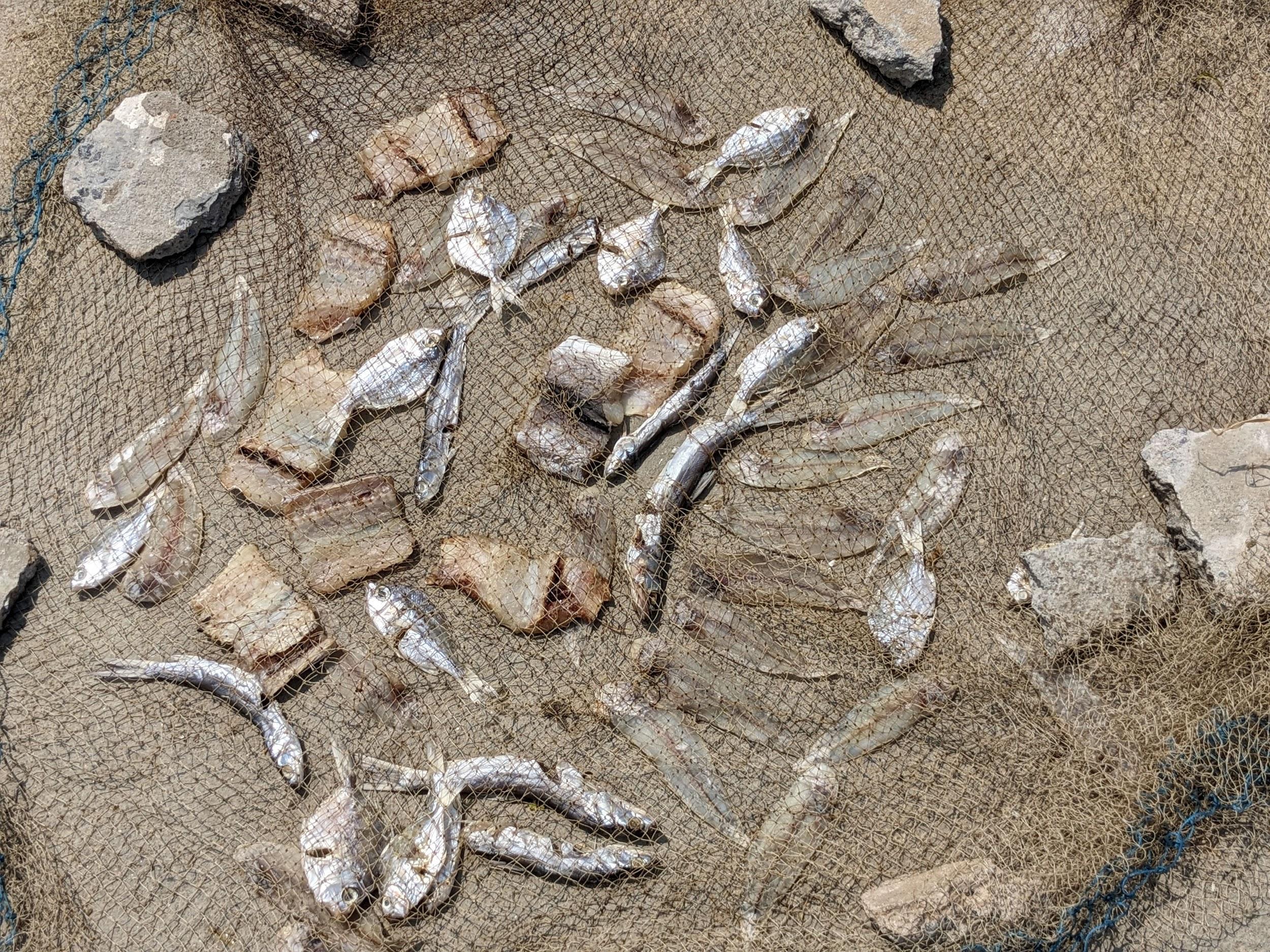Fresh Monsoon Catch
Coping with the vulnerabilities in Pulicat
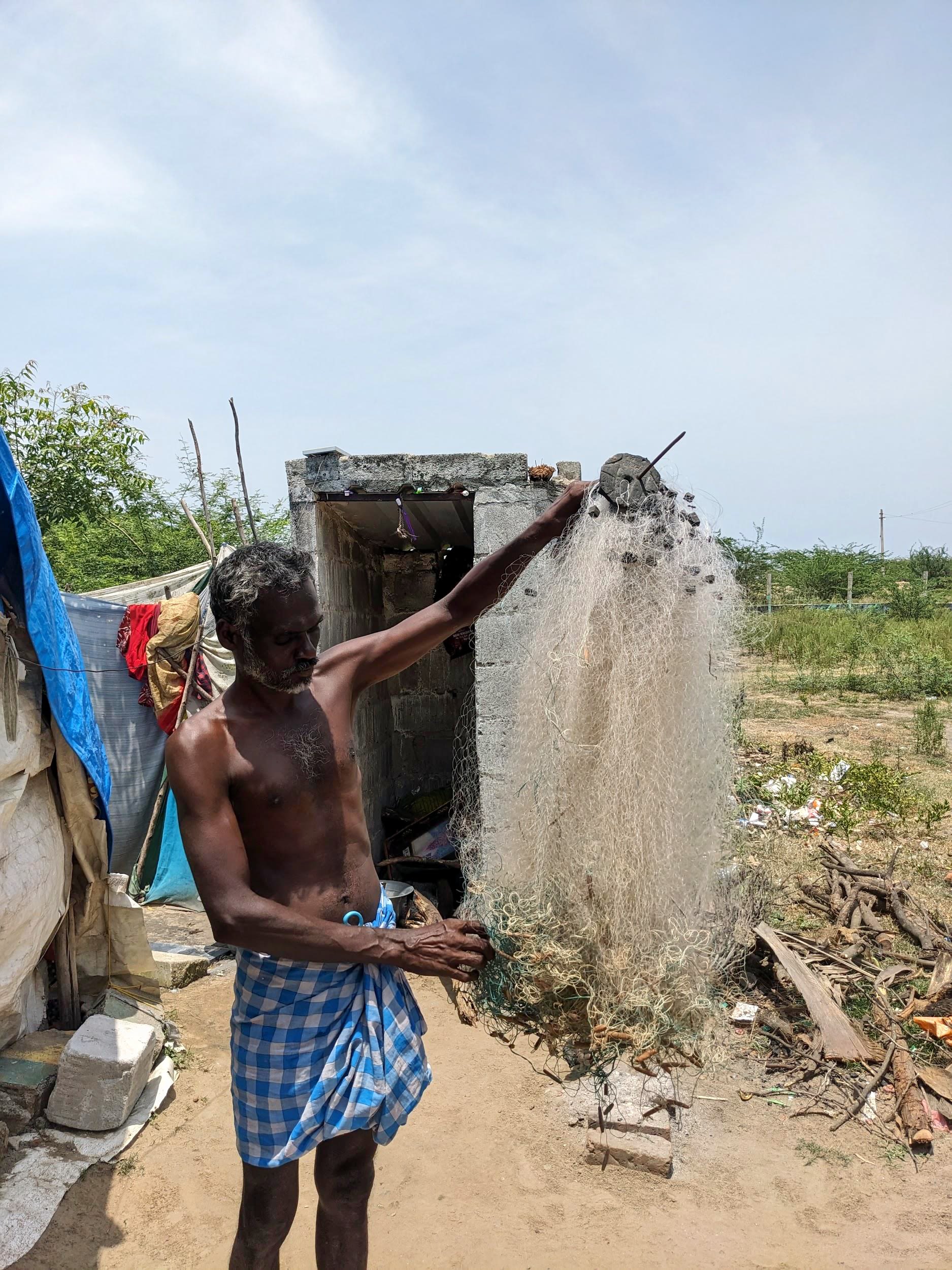
On visiting in August, the weather is hot and dry, with most people staying indoors or away to work at the factories in the nearby industrial town. Haridas, a construction labourer who comes from a family of woodcutters, sits in his kachcha house, mending a fishing net.
With dry land all around, the sight elicits the question—where would he use this net to catch fish?
In a village situated over 5 km away from the Pulicat Lake coastline, residents do not trudge down to the lake to catch fish. The distance is considerable but their identity as a non-fishing caste also prevents them from claiming a share of the fishery. In many parts of India, fishing is as much of an occupation as it is one’s marker of community.
Pulicat Lake is the second largest brackish water lagoon in India situated along the Coromandel coast, which extends from the extreme southeastern portion of Andhra Pradesh to the northeastern portion of Tamil Nadu state.
A look into the fishing villages of the Coromandel region reveals that the people living in these communities are typically of a single caste, and have been fishing for generations, staying close to the shoreline.
Hence, away from the coastline, people are primarily engaged in other occupations and in the case of this village, the predominant occupation is casual wage labour.
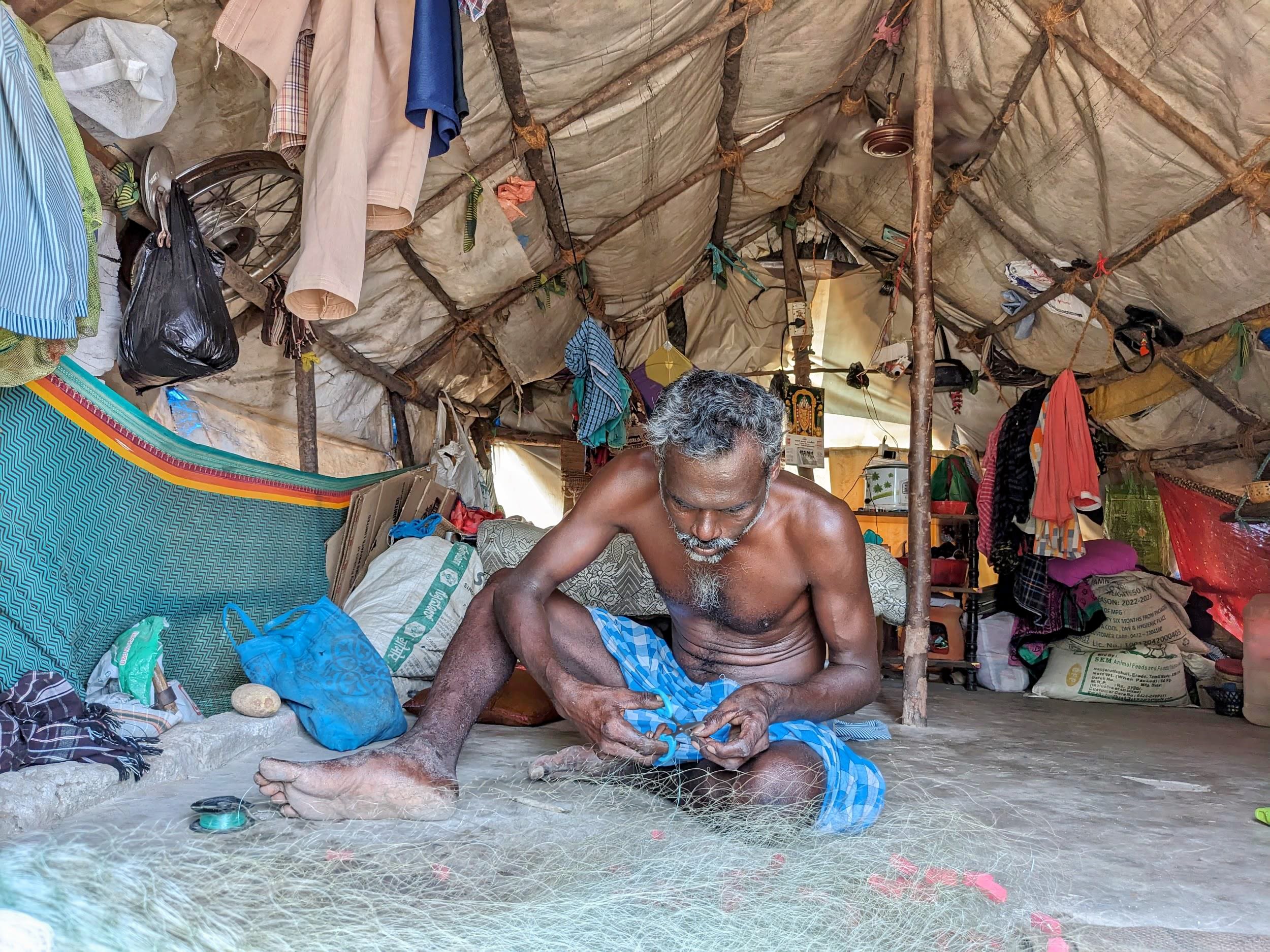
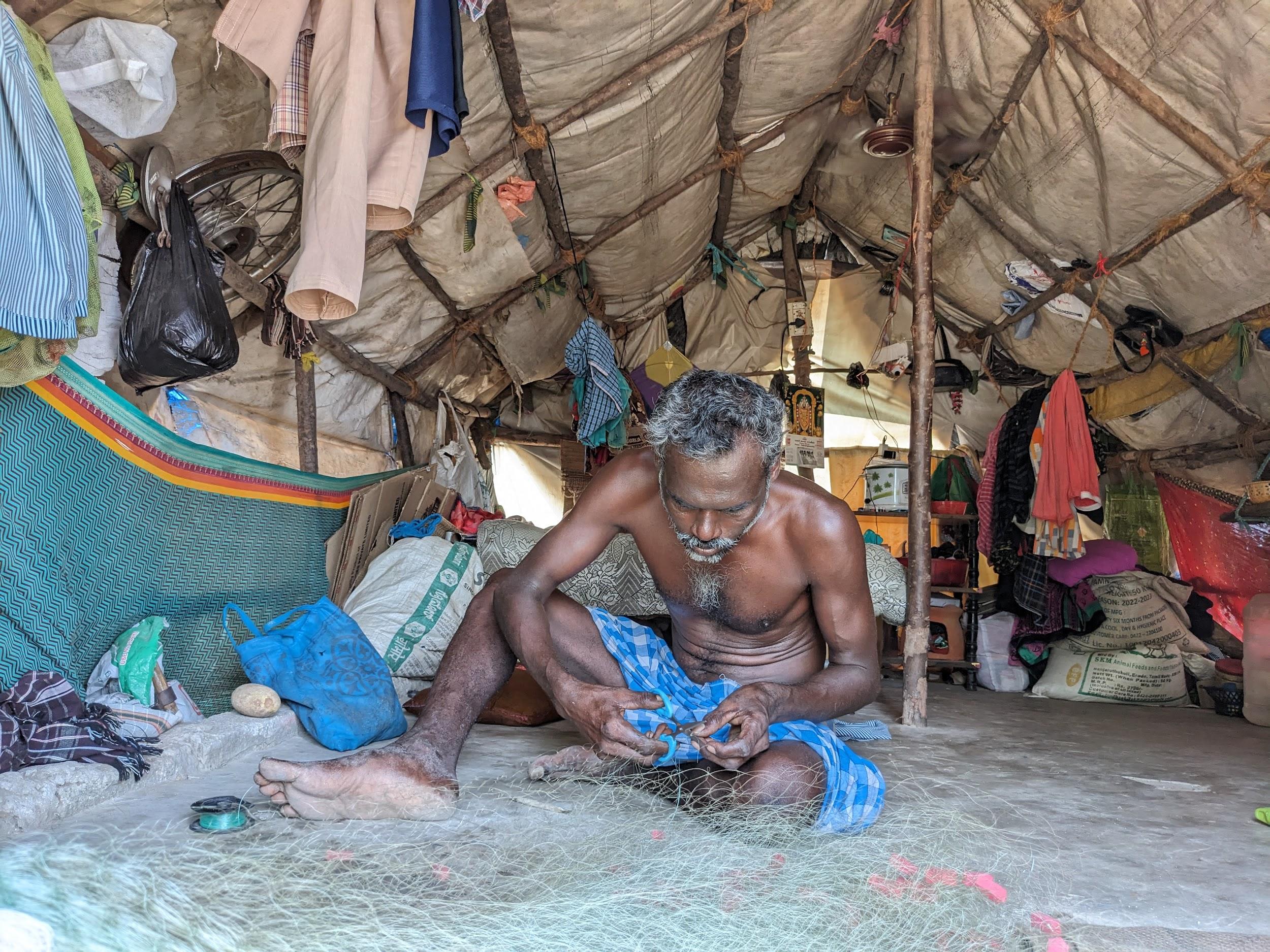
On visiting the village in August, the weather is hot and dry, with most people staying indoors or away to work at the factories in the nearby industrial town. Haridas, a construction labourer who comes from a family of woodcutters, sits in his kachcha house, mending a fishing net. With dry land all around, the sight elicits the question—where would he use this net to catch fish?
Belonging to a non-fishing marginalised community, he does not go to the Lake for fishing either. Pointing to a large tract of land, he tells us that this is where the water would fill up during the seasonal floods that follow every monsoon, allowing all villagers to try a hand at fishing!
Fish set out for drying.
Fish set out for drying.
Vulnerability and Adaptability
Close to water bodies, a community’s livelihood is often intricately tied to that water body. In Pulicat, villagers say, “Neerindri amayathu engal vaazhkai (Our life is not complete without water).” When livelihoods are sensitive to any change in the water body, vulnerability and adaptability also become defining features of such communities.
Vulnerability can be described as a function of a community’s exposure to stresses – especially the environment related – to which it is sensitive and its level of adaptability, that is, its ability to cope with or recover from the effects of exposure.
In the case of Pulicat Lake, its water levels and salinity levels are sensitive to other ecological factors. During monsoons, rain brings freshwater draining into the lake from rivers Swarnamukhi, Kalangi Arani and Korttalaiyar, as well as washes away the sand bars at the lake mouth to allow seawater to enter the lagoon and mix with the freshwater.
Thus, rains ensure freshwater-seawater exchange in the lagoon maintaining its brackishness, which births rich fishery resources. As a result, dry seasons mark a slump in fishing, whereas the onset of monsoons (October to January) ushers in a peak in fishing that brings prosperity to fishermen. However, a little away from the coastline, monsoons also entail floods.
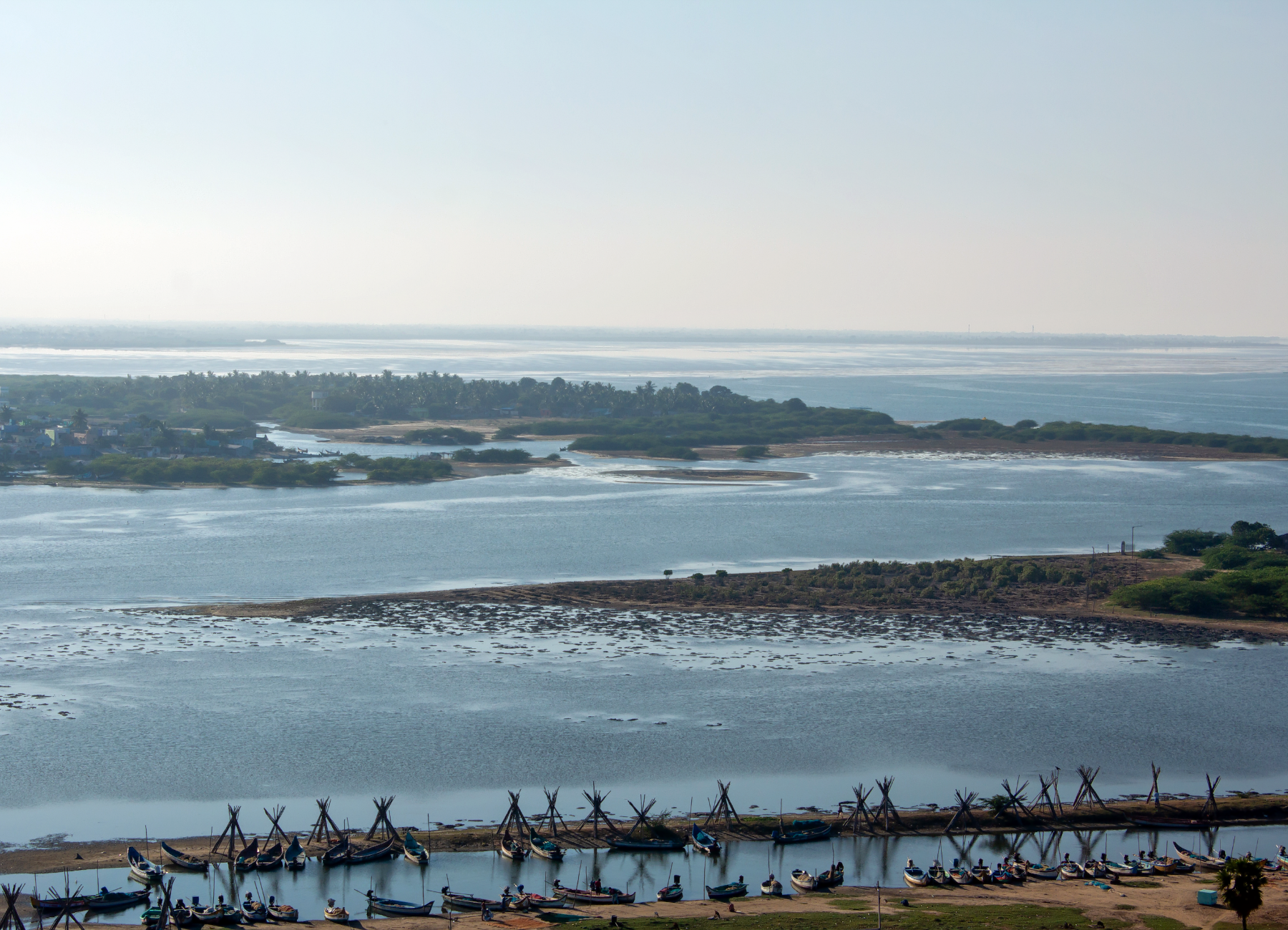

Fishing Away From the Coastline
According to the villagers, flooding has been a seasonal phenomenon during monsoons for years now. A flood is essentially an environmental stressor that threatens lives and livelihood, and so was the case in this village too, where houses used to experience flooding and water-clogging in the past.
Today, the situation has improved since a pakka road was constructed some years back, which acts as a flood embankment allowing the rainwater to drain out into an open ground. The inundated open ground becomes a seasonal pond, thus opening up another source of livelihood fishing.
For Haridas, the seasonal pond is not just another source of livelihood but the only one. As a construction worker who had to forego his earnings every monsoon when all construction work stopped, fishing came as an opportunity to adapt and diversify his livelihood in the face of vulnerability. He started fishing only a year ago after seeing his neighbours earn from it.
It concurs with studies in similar contexts where monsoons and floods bring a curious mix of devastation and opportunity, factors that exacerbate a community’s vulnerability but also opportunities that allow them to adapt to their dynamic environment.
On the coastline, caste not only determines the right to fish but is a regulatory institution that draws rules around sea territories and equipment to be used for fishing.
However, away from the lagoon, where fishing is a fairly new source of livelihood, there are no passed-down customs and conventions around fishing, and thus, caste ceases to be a barrier.
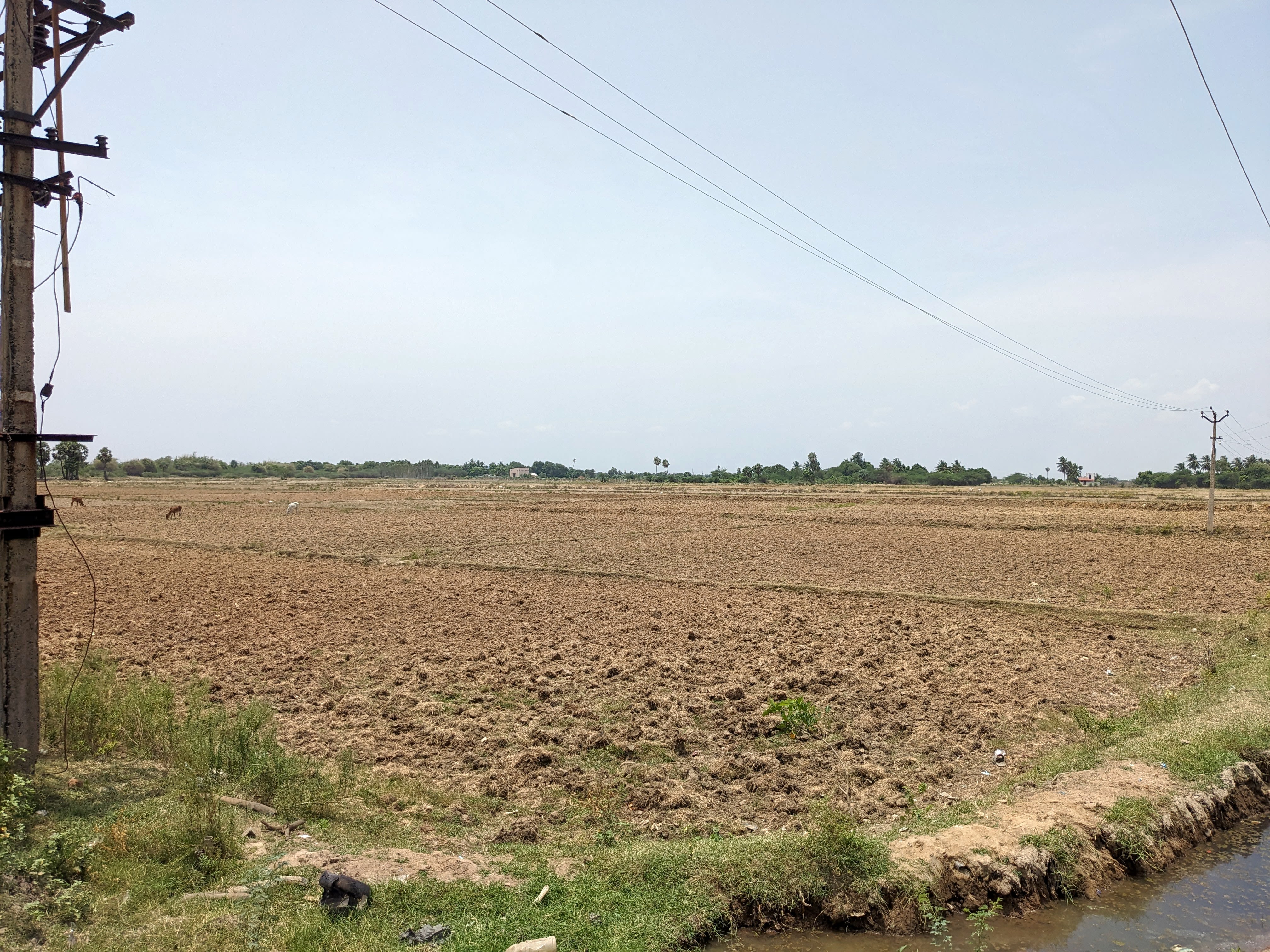
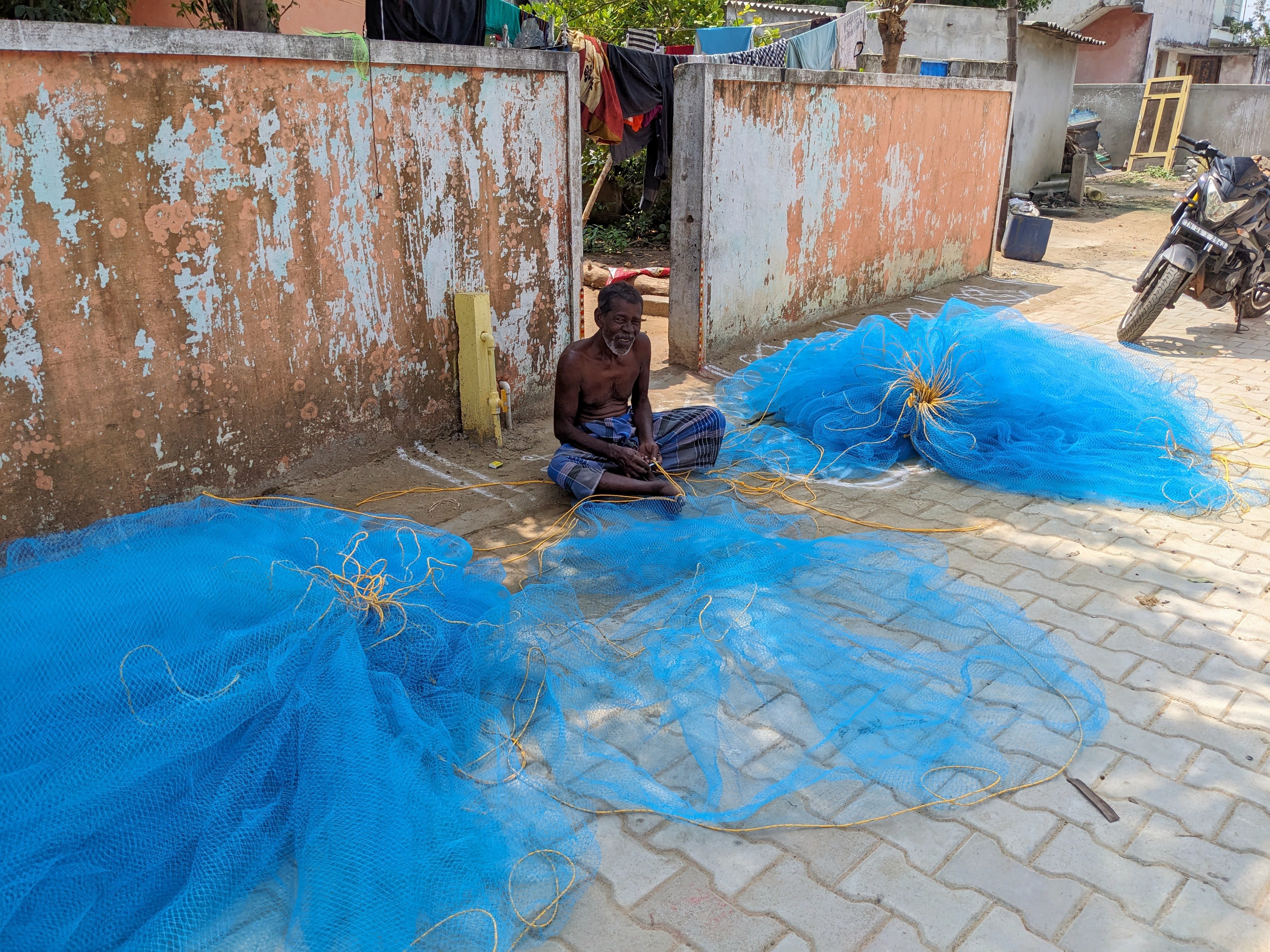
Enough to Survive
Being a seasonal fishing community, the people do not have access to the institutional support and infrastructure that other full-time fisherfolk enjoy. They do not own modern fishing gear and vessels or have direct access to the markets to sell their catch. Hence, when the open ground fills up, villagers go on foot to set up drag nets in the water body to catch fish. For some, buying a dragnet is also not affordable. Showing his net, Haridas says,
“This weighs around 1 kg. It takes me more than a week to mend a net like this. In the market, it costs about Rs 5,000.”
After catching the fish, they store it in ice-filled flour sacks to later sell it to the middlemen who have access to the marketplaces. The people here are at a disadvantage when it comes to market access; since the marketplace is far away, they tell us that transporting fish can add to their costs and reduce earnings. Hence, middlemen have facilitated this market linkage by collecting their yield in bulk every week for sale. On other days, villagers sell in the nearby villages.
“The catch fluctuates day to day… anywhere between 1 kg to 15 kg in a day. The average would be around 7-8 kg of catch a day, which earns me Rs 500-600,” Haridas says.
Even as the floods upend lives and livelihoods, there are rays of hope in communities endeavouring to adapt and eroding caste rigidities in the process. In a hand-to-mouth life, fishing may not substantially boost income but it is a way to cope with the vulnerabilities thrown by nature. It helps them get by through the monsoons, and Haridas is satisfied to at least have a source of livelihood- “it is enough to survive”.
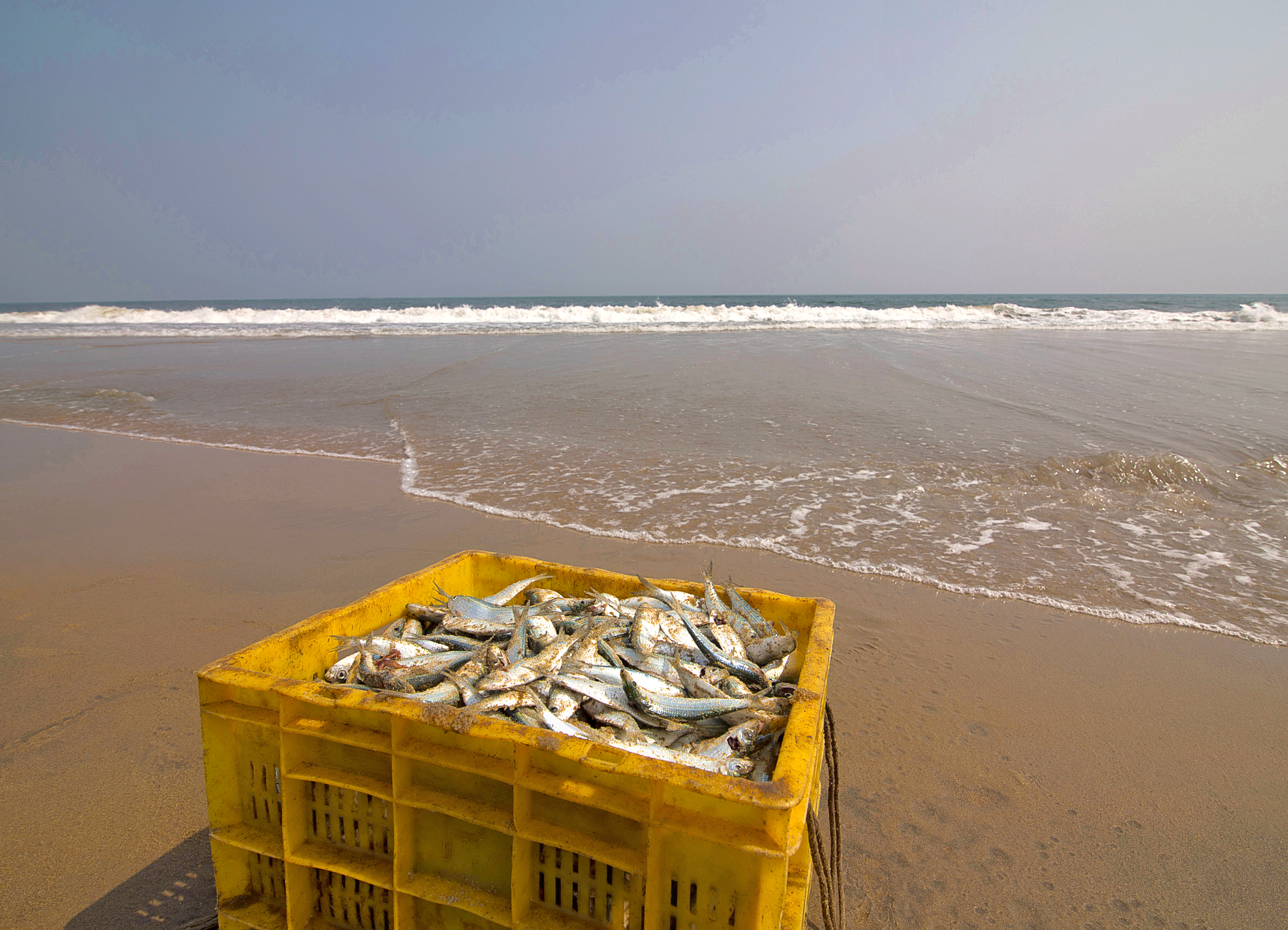
Story and text by Megha Shree and Harshula Sinha. The authors would like to thank Pramod Tiwari, Christopher Glan, Arul Raj, and Kothandam D for supporting the fieldwork for the project.
Production and design support by: Keerthana Ramaswamy
Special thanks to the community of the Pulicat region for their time, patience, and contributions to this story.

